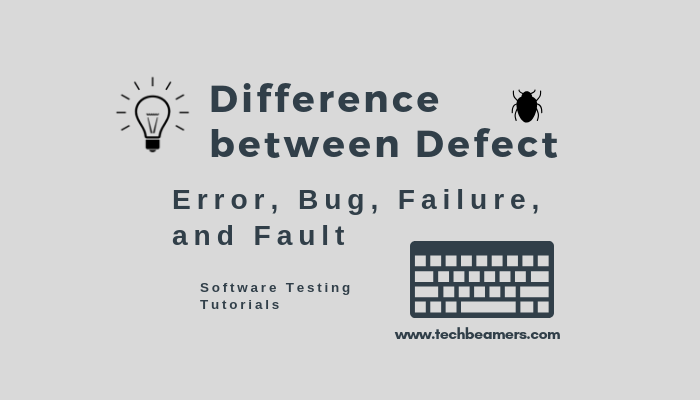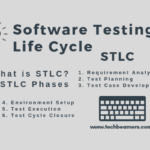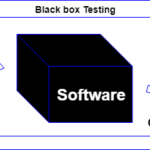In this brief testing tutorial, we’ll describe the difference between Defect, Error, Bug, Failure, and Fault.
Software testing lays down the mechanism for finding defects in an application, product or system. A Defect is a deviation between the actual and expected outcomes. A mistake in the source code indicates Error. The error uncovered by a tester becomes a Defect. The defect recognized by the dev team turns into a Bug. If a product build doesn’t pass the acceptance criteria, then it proves to be a Failure.
Hence, all these testing terms revolve around the defect. Let’s understand it in more details.
Defect In Manual Testing
A defect is an anomaly which causes a deviation between the expected and actual results. It could be an error discovered once the application got deployed into production. Some software could show potential issues with both the internal and external features. Hence, any variance in the behavior of the functionalities of a product or software got to be a defect in manual testing.
Check out 100+ manual testing interview questions for Software testers of all experience levels.
Defect Vs. Wrong, Miss, Error, Bug, Failure, and Fault
In Software Testing, Defect has many names such as Wrong, Miss, Error, Bug, Failure, and Fault. Let’s find out what all of these are:
1. Wrong-
Wrong indicates the incorrect implementation of the customer requirements. A manual tester will record it as a defect because of the deviation from the given specification.
2. Miss-
Miss shows that one or more customer requirements got missed in the implementation. It is also a deviation from the original specifications. The tester would also log it as a defect to
3. Error-
An error could arise because of a coding mistake by the developer, he misunderstood, or the requirement was not clear enough. For example, a developer may misinterpret a design flow, or he might use an incompatible data type which results in an Error. Some actions like insufficient array limit, loop getting into the infinite loop or invalid syntax cause to errors. If a tester catches any of these, then he or she will log a defect for the same.
4. Bug-
A bug occurs because of some coding error and leads a program to malfunction. It may also lead to a functional issue in the product. These are fatal errors that could block a functionality, results in a crash, or cause performance bottlenecks. Such errors got treated as Bugs in manual testing.
5. Failure-
A failure indicates a fatal issue in software or in its module which is making the system inoperative or unresponsive. Such an error in the software which the end customer reports are a Failure. The manual testers also discover many failures during the development cycle.
6. Fault-
A fault makes an application behave in a wrong manner.
The problems like an invalid step, lack of resources or inappropriate data definition could cause a fault in a program. It may happen in software because the developer has not added the code for fault tolerance.
Summary – Points to Ponder
We provided the definition of Wrong, Miss, Error, Bug, Failure, and Fault in a simplistic manner. However, some of you could have a different perception of these terms. Please feel free to send your views to us and make these more realistic for the testing fraternity.









